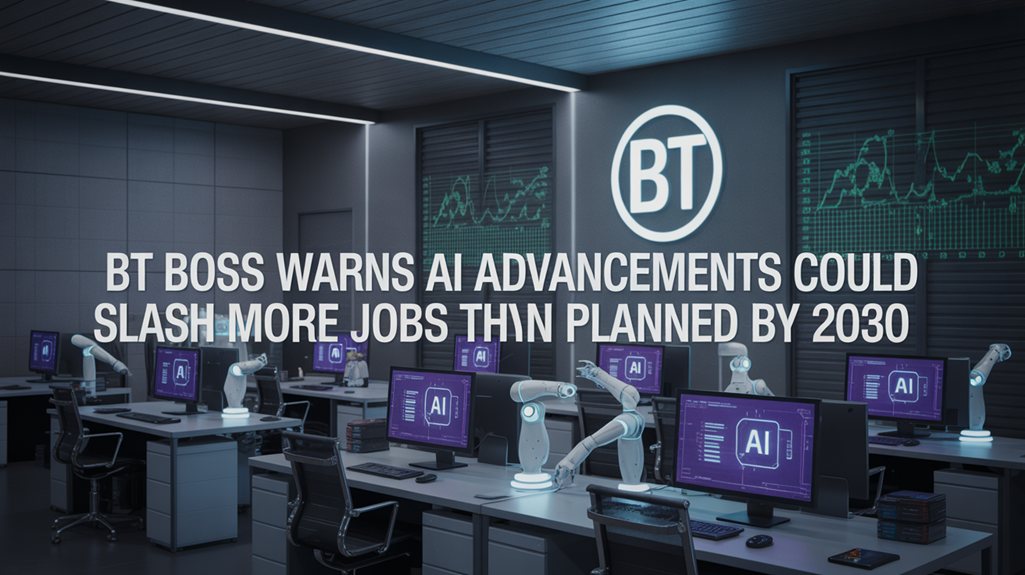AI Acceleration Threatens More BT Jobs
While BT already stunned workers with plans to slash up to 55,000 jobs by 2030, the telecommunications giant is now hinting that AI advancements could make the situation even worse. The company’s initial announcement in 2023, which targeted cutting about 42% of its workforce, apparently didn’t fully account for artificial intelligence’s rapid evolution. Surprise, surprise.
The telecom behemoth’s cost-cutting strategy is now looking like it might be just the beginning. AI’s automation capabilities are developing faster than expected, potentially rendering even more human roles completely obsolete. The math isn’t complicated – more AI means fewer humans needed. That’s the cold, hard reality BT employees are facing. By the mid-2030s timeframe, nearly a third of all jobs could be automated across industries.
BT hasn’t exactly been shy about embracing artificial intelligence, either. Their virtual assistant “Aimee” already handles up to 60,000 customer interactions every week. No coffee breaks, no sick days, no complaints about working conditions. Perfect employee, right?
The company has been aggressively implementing AI across both BT and EE operations, using generative AI to boost sales and support functions. This isn’t just a BT problem. Companies across industries are jumping on the AI bandwagon. Klarna and countless others are automating roles traditionally held by humans. White-collar jobs aren’t safe anymore. The cushy office job might soon be as endangered as the dodo.
Meanwhile, Openreach, BT’s infrastructure division, continues its ambitious expansion plans, targeting 25 million homes by 2026 and eventually 30 million by 2030. But after 2026, the rollout will slow to just 1 million homes annually. Wonder who – or what – will be maintaining all that infrastructure?
The social and economic fallout from these AI-driven job cuts could be massive. Unemployment, economic instability, social unrest – not exactly minor concerns. Governments and industries will need to figure out how to handle thousands of displaced workers. Chief executive Allison Kirkby has identified approximately 10,000 customer service positions that could be eliminated through automation. CEO Kirkby indicates the company could become even smaller by the end of the decade than originally planned. Retraining programs? Universal basic income? Nobody really knows.
For BT, the future remains murky. The company faces the tricky balancing act of harnessing AI’s benefits while not completely decimating its workforce. But let’s be real – when profits are at stake, human considerations often take a back seat.
The 55,000 job cuts initially planned might end up looking like a conservative estimate. Workers beware: the robots are coming, and they don’t need lunch breaks.









